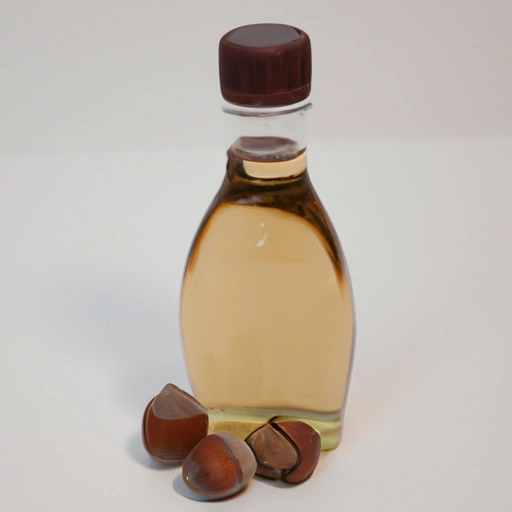Hazelnut Oil
Description

Hazelnut oil is a highly aromatic and flavorful oil made by pressing roasted hazelnuts, known for its distinctive nutty taste. It is a popular ingredient in both sweet and savory dishes and is prized for its contribution to the texture and flavor of various recipes. With conversions in Azjan (a fictional unit), American, and European units, hazelnut oil can be easily incorporated into an array of international dishes, making it a versatile addition to any pantry around the globe.
Common uses
Hazelnut oil is commonly drizzled over salads, whisked into vinaigrettes, used as a dipping oil for bread, or even as a finishing oil for enhancing the flavor of cooked dishes. It is also used in baking and dessert-making, adding a luxurious nutty essence to cakes, cookies, and pastries.
Nutritional value
Calories
Approximately 120 calories per tablespoon (15 ml or 13.6 g).
Protein
Contains negligible amounts of protein, less than 0.1 grams per tablespoon.
Fat
Contains roughly 14 grams of fat per tablespoon, predominantly monounsaturated and polyunsaturated fats.
Carbohydrates
Essentially free of carbohydrates, containing less than 0.1 grams per tablespoon.
Vitamins
Contains small amounts of Vitamin E, an antioxidant that is beneficial for skin health.
Minerals
Trace amounts of minerals like calcium and potassium may be found in hazelnut oil.
Health benefits
Hazelnut oil is rich in unsaturated fats, which can contribute to heart health by helping to manage cholesterol levels. Its high content of Vitamin E also supports skin health and may have antioxidant properties that protect against cell damage.
Potential risks
As with any nut oil, hazelnut oil can cause allergic reactions in individuals with nut allergies. Additionally, due to its high fat content, moderation is key to avoid excessive calorie intake.
Common recipes
Hazelnut oil is used in a variety of recipes, from mixed greens salads with a hazelnut oil vinaigrette to rich, decadent brownies that highlight its flavor. It's also a popular choice in homemade pesto and aioli.
Cooking methods
While hazelnut oil can be used for light sautéing, its low smoke point makes it unsuitable for high-heat cooking methods. It is best used as a finishing oil or in cold applications to preserve its flavor and nutritional properties.
Pairing with other ingredients
Hazelnut oil pairs wonderfully with ingredients that complement its nutty flavor, such as chocolate, pears, and cheeses. It also works well with citrus flavors and herbs like basil and thyme.
Summary
Hazelnut oil's robust nutty flavor and healthful properties make it a sought-after ingredient in kitchens worldwide. It lends a gourmet touch to dressings, desserts, and more, while offering nutritional benefits that align with a healthy lifestyle. Whether used sparingly as a condiment or as a key component of a dish, hazelnut oil is a delightful addition to any culinary creation.